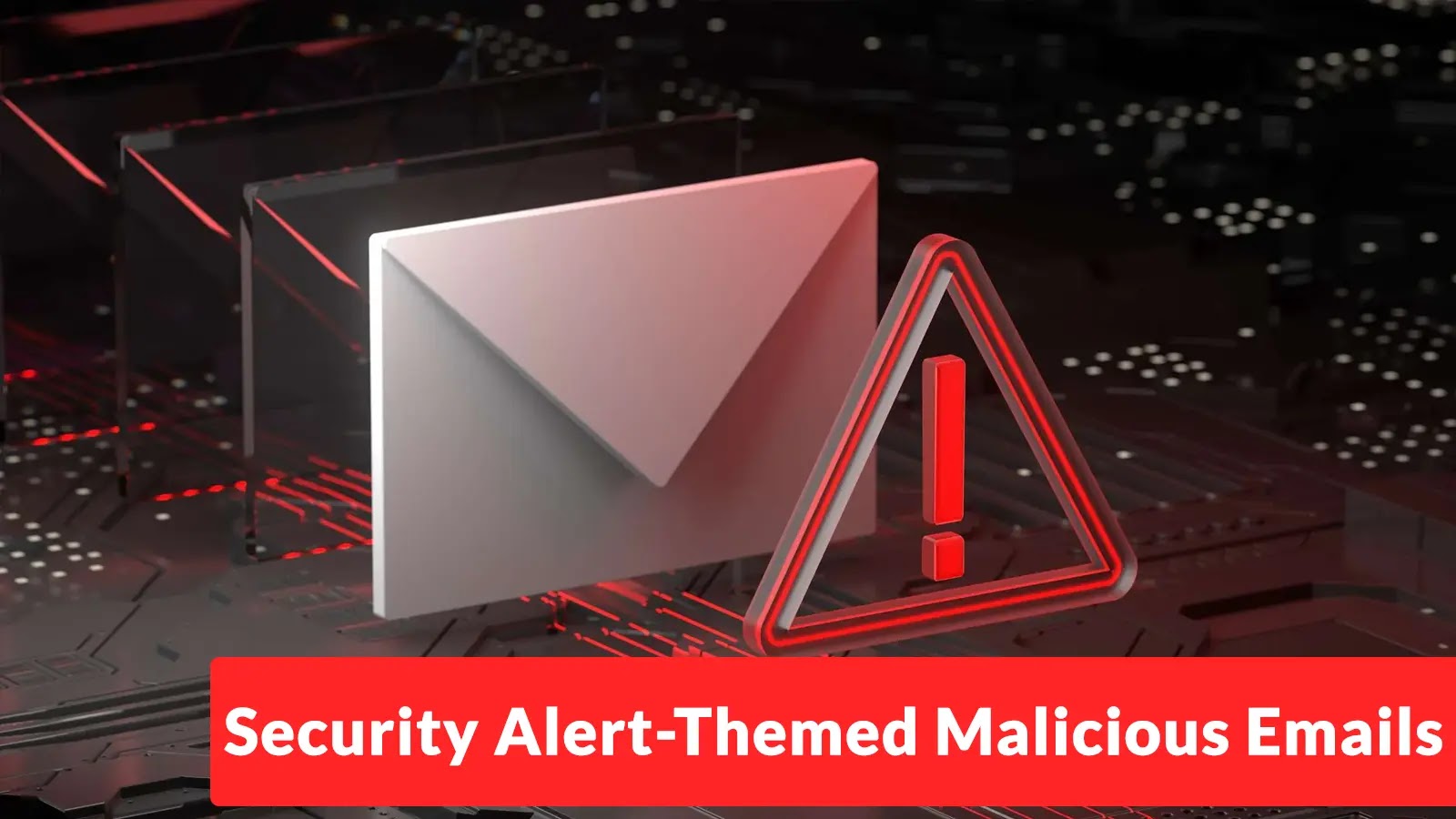
Beware of Security Alert-Themed Malicious Emails that Steal Your Email Logins
The Deceptive Lure of Security Alert Phishing: Protecting Your Email Credentials
In the intricate landscape of digital security, a new and particularly insidious threat has emerged, targeting the very gateways to our online lives: our email inboxes. This wave of sophisticated phishing attacks, cunningly disguised as official security alerts, aims to panic recipients into compromising their email login credentials. Whether you’re an IT professional safeguarding an enterprise network or an individual protecting personal data, understanding these tactics is paramount.
Understanding the Threat: Security Alert Impersonation
Recent reports highlight a significant surge in malicious emails designed to mimic legitimate security notifications. These aren’t your typical, easily identifiable spam messages. Instead, they exhibit a high degree of authenticity, often appearing to originate from the victim’s own domain or a trusted security service. The primary objective is to create a sense of urgency and fear, typically by warning about “blocked messages” or “unauthorized login attempts.”
The attackers leverage social engineering to exploit our natural inclination to react quickly to security threats. By presenting a seemingly urgent problem, they aim to bypass critical thinking and prompt an immediate, unverified response. This psychological manipulation is at the core of their effectiveness.
How the Attack Unfolds: The Credential Harvesting Mechanism
Once a user clicks on a malicious link embedded within these fake security alerts, they are typically redirected to a convincing replica of a login page. This page is meticulously crafted to resemble legitimate email service providers or corporate authentication portals. Unsuspecting users, driven by the perceived urgency of the security alert, will then input their email addresses and passwords into these fraudulent forms.
The moment these credentials are submitted, they are harvested by the attackers. With access to a user’s email account, threat actors can then:
- Access sensitive personal or corporate information.
- Launch further phishing campaigns from the compromised account, increasing their credibility.
- Initiate financial fraud or data exfiltration.
- Bypass multi-factor authentication if the email is a recovery method or used for verification.
Identifying the Red Flags: What to Look For
While these phishing attempts are sophisticated, they often contain subtle indicators that can betray their true nature. Being vigilant and knowing what to look for can significantly reduce your risk:
- Sender Address Discrepancies: Even if the display name appears legitimate, carefully examine the full sender email address. Look for misspellings, unusual domains (e.g., yourcompany.com.security-alert.net), or generic email addresses from free providers.
- Urgent or Threatening Language: Phishing emails often employ alarmist language designed to bypass rational thought. Phrases like “Immediate action required,” “Your account will be suspended,” or “Unauthorized access detected” are common tactics.
- Generic Greetings: Legitimate security alerts from your own organization or service provider will typically address you by name. Phishing emails often use generic greetings like “Dear User” or “Valued Customer.”
- Suspicious Links: Before clicking any link, hover over it to reveal the actual URL. Be wary if the domain does not match the expected legitimate service or if it contains unusual characters or spellings. A common trick is to use subdomains that appear legitimate, e.g.,
security-alert.yourcompany.com.malicioussite.net. - Poor Grammar or Spelling: While not always present in sophisticated attacks, errors in grammar and spelling can still be a strong indicator of a phishing attempt.
- Unexpected Attachments: Be cautious of unsolicited attachments, especially if they are executable files or archive formats, even if the email appears to be a security alert.
Remediation Actions: Fortifying Your Email Security
Proactive and reactive measures are crucial to defend against these email-borne threats:
- Verify Authenticity Independently: If you receive a suspicious security alert, do not click on any links in the email. Instead, navigate directly to the official website of the service or your email provider (e.g., by typing the URL into your browser) and log in there to check for any alerts or messages. Alternatively, contact their support directly using a verified phone number or email address.
- Enable Multi-Factor Authentication (MFA): MFA adds a critical layer of security by requiring a second form of verification (e.g., a code from your phone or a biometric scan) in addition to your password. Even if your password is stolen, attackers cannot access your account without this second factor.
- Regularly Update Passwords: Use strong, unique passwords for all your online accounts, especially your email. Consider using a password manager.
- Educate Yourself and Your Team: Ongoing security awareness training is vital. Regular reminders about phishing tactics and how to identify them can significantly reduce the success rate of these attacks.
- Implement Email Security Solutions: For enterprises, robust email gateway security solutions with advanced threat detection, sandboxing, and DMARC/SPF/DKIM policies are essential to filter out malicious emails before they reach inboxes.
- Report Phishing Attempts: Forward suspicious emails to your IT department (if applicable) and report them to the relevant service provider or anti-phishing organizations. This helps in tracking and blocking these malicious domains.
Tools for Enhanced Email Security
| Tool Name | Purpose | Link |
|---|---|---|
| DMARC, SPF, DKIM Testers | Verifies email authentication protocols to prevent spoofing. | MXToolbox |
| PhishTank | A collaborative clearing house for data and information about phishing. | PhishTank |
| Email Gateway Security (e.g., Mimecast, Proofpoint) | Advanced threat protection, spam filtering, and data loss prevention for email. | Mimecast, Proofpoint |
| Password Managers (e.g., LastPass, 1Password) | Generates strong, unique passwords and securely stores them. | LastPass, 1Password |
Conclusion
The increasing sophistication of security alert-themed phishing emails demands heightened awareness and robust defenses. These attacks thrive on urgency and deception, aiming to exploit the trust users place in official communications. By understanding their methods, recognizing the warning signs, and implementing strong security practices like multi-factor authentication and independent verification, we can significantly diminish the threat to our valuable email credentials and the sensitive information they protect. Stay alert, stay secure.





